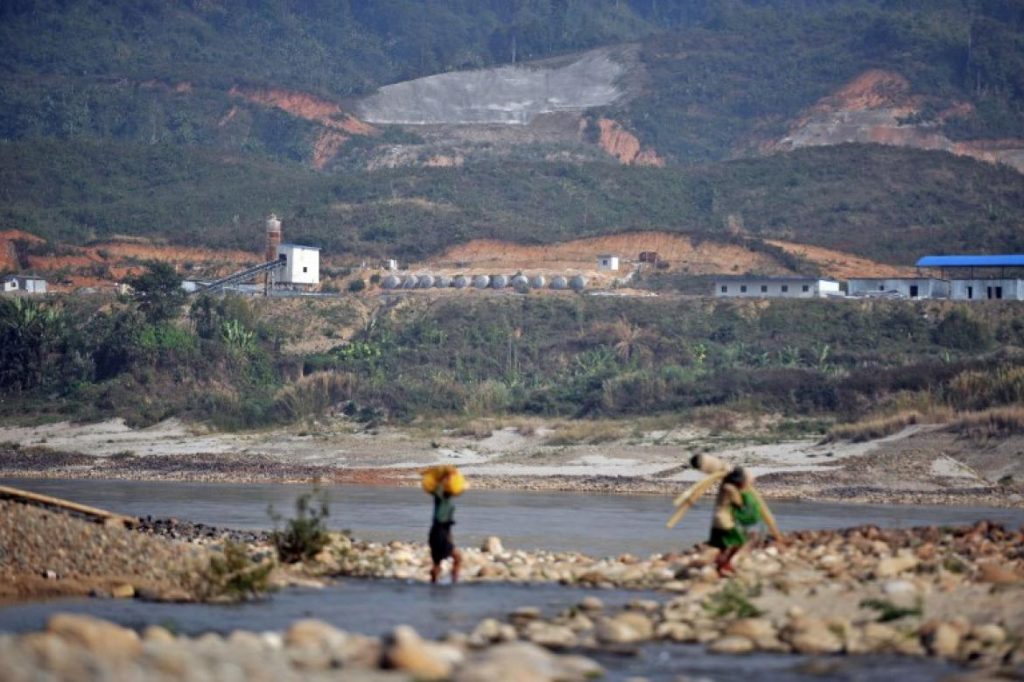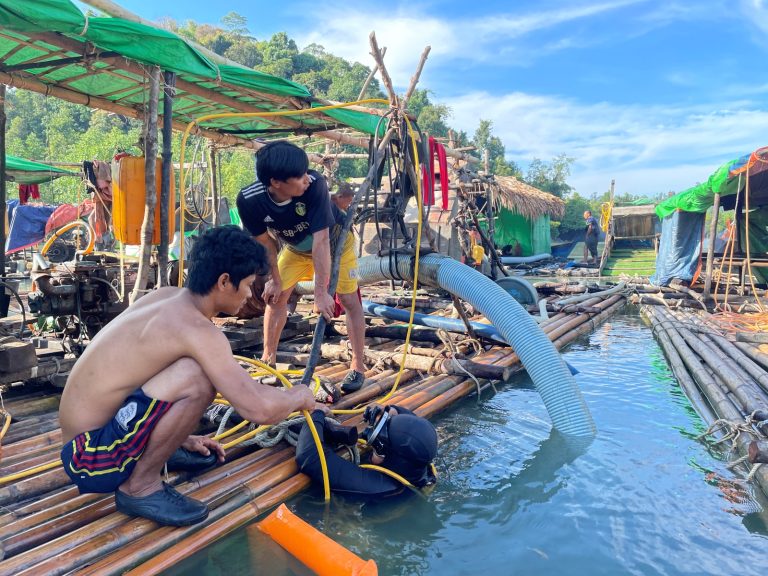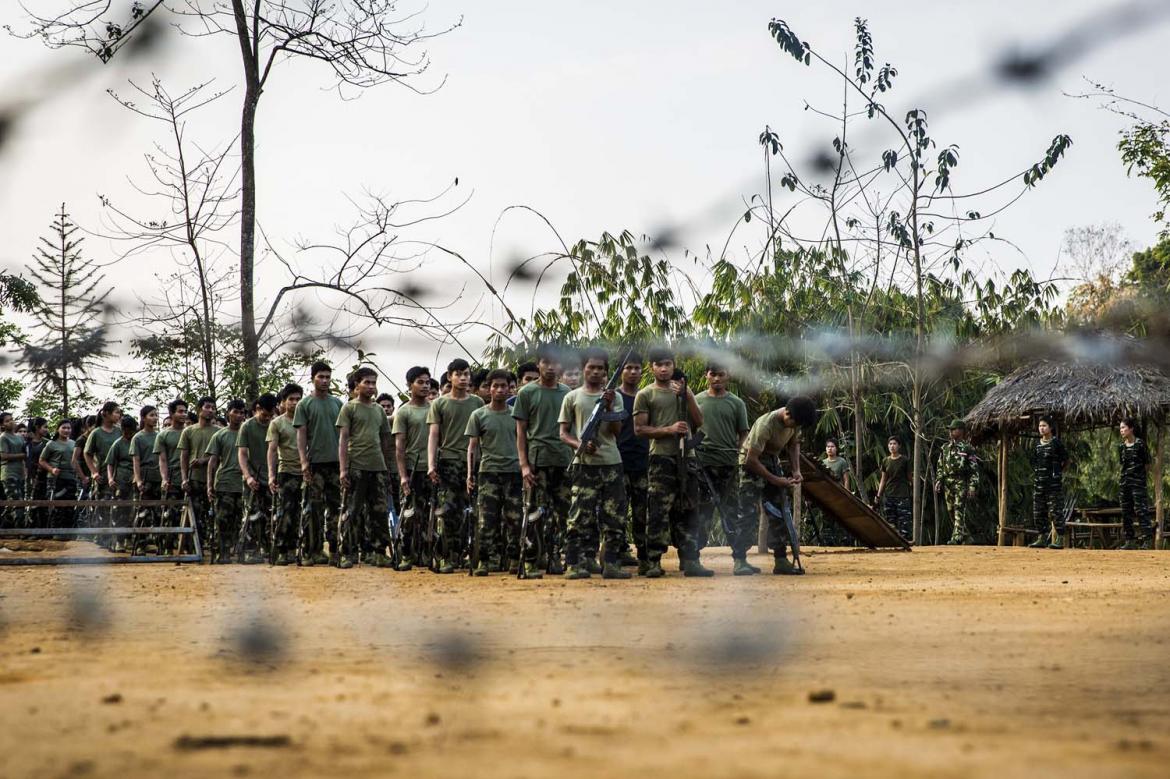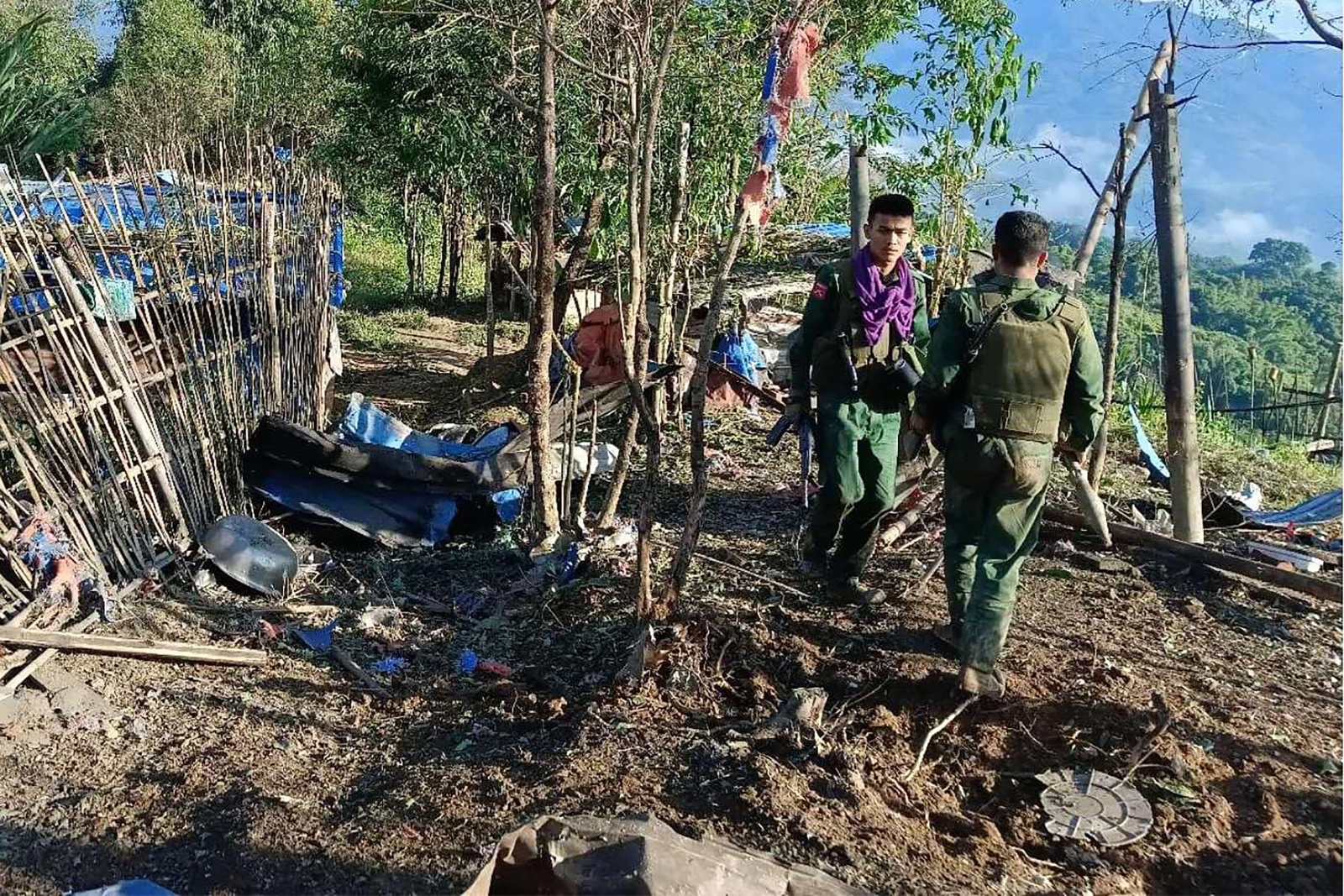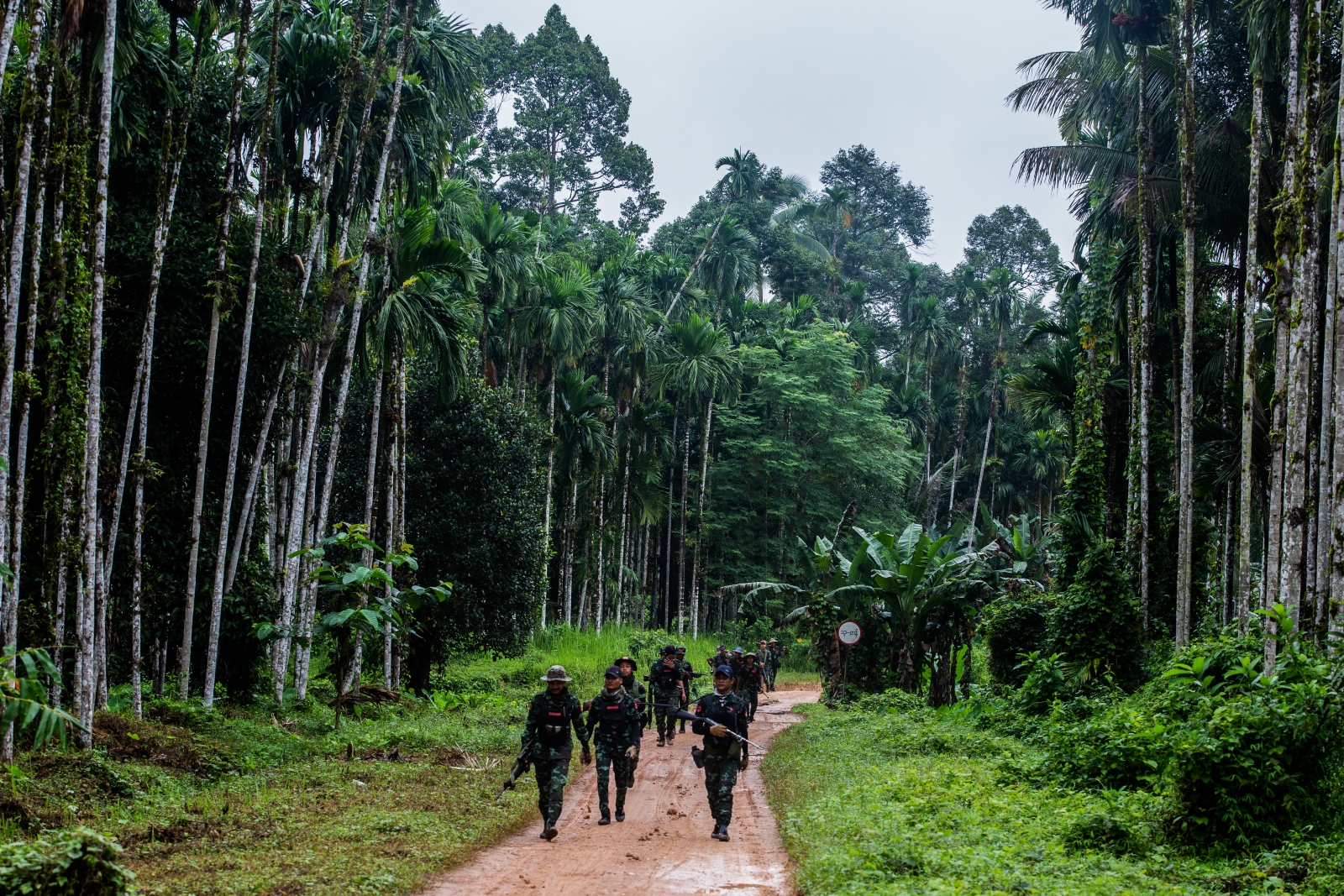The Chinese government is advising the Ministry of Electricity and Energy on a white paper for hydropower policy at the same time as pressuring Myanmar to revive the long-stalled Myitsone dam.
By THOMAS KEAN | FRONTIER
WHEN THE International Finance Corporation released the final version of the Strategic Environmental Assessment of Myanmar’s hydropower sector in late November 2018, it was almost identical to the final draft posted on its website six months earlier.
That is, except for the cover, where the logo of the Ministry of Electricity and Energy had been removed, leaving only that of the Ministry of Natural Resources and Environmental Conservation.
This seemingly minor change has gone largely unnoticed. But the implications are potentially significant for hydropower development in Myanmar, as well as the country’s international relationships and domestic politics.
The logo was removed because in 2018 the ministry quietly began working on a new hydropower policy with technical assistance from China’s National Energy Administration, multiple sources confirmed to Frontier.
Support more independent journalism like this. Sign up to be a Frontier member.
This has cast significant doubt on the Myanmar’s government’s commitment to the key recommendation in the SEA: that five of its mainstem rivers, including the Ayeyarwady and Thanlwin (Salween), be reserved from hydropower development.
Such a move would have blocked billions of dollars of planned investment from Chinese state-owned companies, which have lobbied vigorously against the SEA in public and behind closed doors.
But with China advising on hydropower policy, mega-dams like the 6,000-megawatt Myitsone in Kachin State, which has been suspended since September 2011, are much better placed to proceed – a prospect that seemed remote just a year ago.
Against this backdrop, the Myitsone developer, State Power Investment Corporation, and the Chinese government have begun to push the unpopular project much more aggressively.
Complaints and controversy
The SEA was the result of nearly two years of work that began in October 2016 with an inception workshop. Supported by the IFC – a member of the World Bank Group – and the aid arm of the Australian government, it was drafted in collaboration with both MONREC and MOEE.
The SEA provides a bird’s eye view of the sector, examining each basin and assessing the likely environmental and social impacts of hydropower development. It is designed to not only guide government planning but also be used by the private sector – for example, to better understand stakeholder groups, assess the environmental and social risks attached to projects, and see which river stretches or sub-basins are preferred for development.
The key recommendation of the SEA is to restrict development on five mainstems: the Ayeyarwady, Chindwin and Thanlwin (Salween), Mekong and the lower Sittaung. It warns that proceeding with five large planned dams, ranging in size from 1,200MW to 7,000MW, on these mainstems would “completely alter the river system’s hydrologic, sediment transport, and geomorphic functioning … These projects would break river connectivity, trap sediment, and alter the flow regime at a basin scale.”
Instead, the assessment calls for the prioritisation of projects in the “low zone” – those deemed to have the smallest environmental and social impacts.
Mr Duncan Pruett, economic justice programme manager with Oxfam in Myanmar, said the SEA was an “important” document and the reservation of the mainstem rivers and sub-basins high in biodiversity was one of its “strong points”.
However, he said there were concerns the assessment had not placed enough emphasis on the conflict risks associated with hydropower development.
“While the SEA recognises the potential for hydropower to aggravate inequalities and conflict, basins such as Nam Teng and Nam Pawn, which have been identified as particularly vulnerable and conflict-prone, continue to be prioritised for hydropower development,” he said.
The drafting process included meetings with major stakeholders, including the government, private sector and communities. These consultations did not always go smoothly, with many civil society groups boycotting and a meeting in the Kachin State capital, Myitkyina, being picketed by protesters. Some who participated said the half-day sessions were not long enough given the length of the documents, and that there was limited translation available to participants.
Although the SEA was unpopular with some civil society groups, it was also criticised by the Chinese hydropower developers that stood to lose out if its main recommendation were to be implemented.
After releasing the final draft in May 2018, the IFC published feedback that it received from stakeholders. Although anonymity was preserved, some comments seemed to be from the Chinese developers or groups close to them.
“In Chapter 7 Hydropower Business-as-Usual Development Impacts, only negative impacts and no positive impacts have been mentioned,” reads one comment.
“In SEA report, a large number of qualitative statements and colourable views lead to a negative conclusion on the development of hydropower stations on the mainstream of Myanmar’s major rivers.”
“Throughout the entire report, it gives the impression that ‘Environment Protection far outweighs Development’.”
Last-minute surprise
Still, with final stakeholder input received and addressed, an IFC spokesperson told Frontier in late July 2018 that the report would be submitted to the government the following month. “We’re hoping to release it not long after that,” the spokesperson said.
But at a working group meeting for electricity sector development partners on August 8, Minister for Electricity and Energy U Win Khaing dropped a bombshell: the ministry was working on a new hydropower policy – a “white paper”, in his words – that would incorporate the SEA.
An IFC representative familiar with the SEA process told Frontier the ministry had still not provided any further details to IFC on the white paper.
“[W]e have heard that the white paper is being conducted by a Chinese organisation, however we do not know the contents of the white paper, or its purpose, or how it links – if at all – to the SEA,” the IFC representative said.
“Our question is, what happens when they do complete this white paper? Will it be in contradiction to the SEA? What does that mean for how they’re going to move forward for their decision-making?”
The IFC representative refused to discuss negotiations with the Ministry of Electricity and Energy that resulted in its logo being removed from the report, saying only that the IFC’s priority for the SEA “was to release it to the public in a timely manner”.
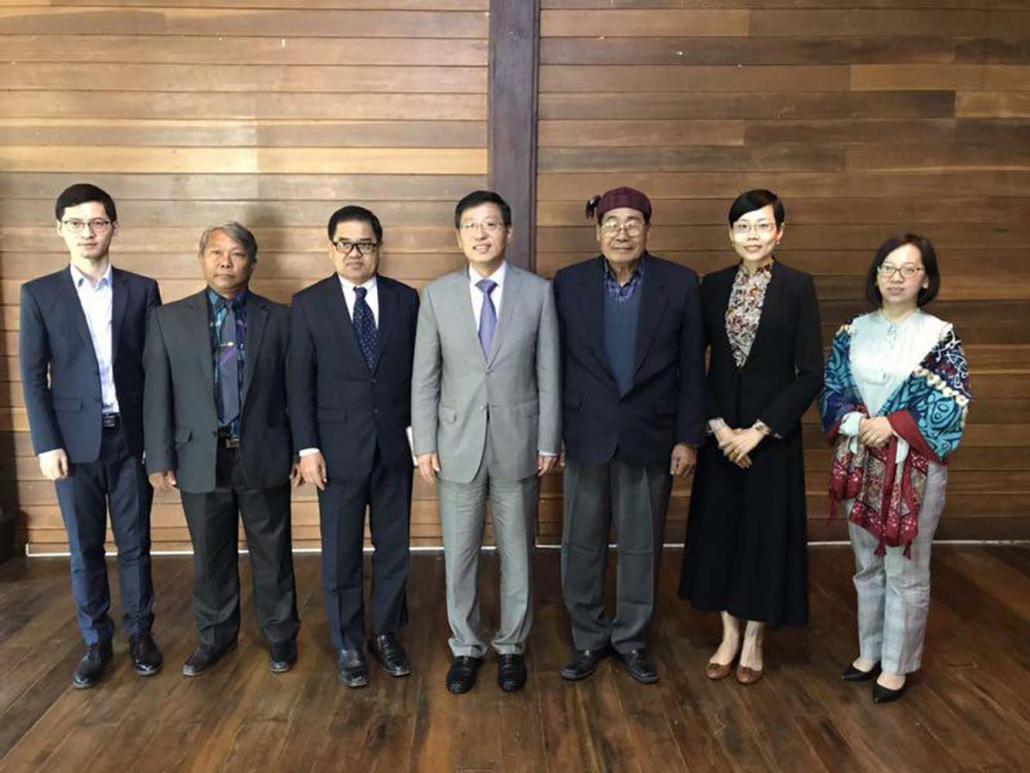
Chinese ambassador to Myanmar Mr Hong Liang (centre) with Kachin political leaders in December 2018. (Chinese Embassy Myanmar)
From SEA to NEA
Multiple sources confirmed to Frontier that the ministry was drafting the white paper with technical support from China’s NEA.
The NEA is responsible for energy planning and regulation, and implements the decisions of the National Energy Commission headed by Premier Li Keqiang.
The administration was established a decade ago by the powerful National Development and Reform Commission, which is spearheading the Belt and Road Initiative; the head of the NEA is a vice minister for the NDRC.
Frontier understands that the China Renewable Energy Engineering Institute – a think tank under the NEA, according to Chinese state media – is working with the ministry on the white paper.
The NEA has become a more visible presence in Myanmar since early 2018, when its deputy administrator, Mr Li Fanrong, a former chief executive officer at state-owned energy firm CNOOC, visited for trilateral negotiations with Bangladesh on electricity trading. Li also met State Counsellor Daw Aung San Suu Kyi during the visit.
In late August, electricity minister Win Khaing travelled to China for talks with then-NEA chief Mr Nur Bekri and Chinese hydropower developers about “matters relating to bilateral cooperation, electricity and energy sector projects under China-Myanmar economic corridor”, Myanmar’s state media reported. Shortly after Win Khaing’s August visit, the NEA began working with ministry officials on the new hydropower policy, one source told Frontier.
In September, Bekri was detained on suspicion of corruption and stripped of his posts. Two months later, China’s State Council appointed former PetroChina president Mr Zhang Jianhua to lead the NEA. But this does not appear to have affected cooperation on the hydropower policy; Chinese officials have since visited the ministry several times to collect data and are processing it in China to formulate the strategy, one source said.
On October 18, Win Khaing made another visit to China for the Belt and Road Energy Administerial Conference at Suzhou. The following day he met NEA deputy administrator Li – who, following Bekri’s dismissal, was the administration’s highest-ranking official – to discuss Myanmar’s electricity and energy sector, including bilateral cooperation projects, according to a ministry press release.
One Western diplomat based in Myanmar said the cooperation on hydropower policy was an indication that “China has been getting more sophisticated in general in how it engages with Myanmar on economic projects”.
“They’re offering technical assistance and using Western professional service firms – Western-educated lawyers, for example,” the diplomat said. “The capacity of the Myanmar government to evaluate and manage projects probably hasn’t grown as fast as China’s sophistication. We just don’t want them to make mistakes that are going to, for example, leave huge amounts of debt for future generations. It’s important for Myanmar’s political leadership to have a mechanism in place to make good decisions.”
Green light for Myitsone?
The Ministry of Electricity and Energy did not respond to questions from Frontier.
Mr Joern Kristensen, the executive director of the Myanmar Institute for Integrated Development, which prepared the SEA together with the International Centre for Environmental Management, said the apparent decision to back away from the SEA’s main recommendation was likely made above the ministry.
“This goes beyond MOEE because obviously the way the Chinese are engaged, it’s at the top levels of government,” he said.
Regardless, it is the clearest indication yet that the government may give the green light to proceed with the 6000-megawatt Myitsone project and other megadams, which had previously seemed unlikely.
Although the projects are deeply unpopular in Myanmar and have been stalled for many years, Myanmar is becoming increasingly dependent on China, both politically and economically, as a result of the Rakhine conflict, the peace process and BRI.
As Frontier reported in November, in the second half of 2018 the Chinese government and developer SPIC began ramping up pressure on Myanmar to resolve the future of the Myitsone Dam, which was suspended in 2011.
In late December, Chinese ambassador to Myanmar Mr Hong Liang reportedly warned ethnic Kachin political and religious leaders during a meeting in Myitkyina not to oppose Chinese projects in the state.
The embassy later released a statement saying that when Liang mentioned the Myitsone project, Kachin leaders “said that the local people of Kachin State do not oppose the Myitsone hydropower project; it is some individuals and social organizations from outside that oppose the project”.
This was disputed by those who attended the meeting. Three Kachin political parties whose leaders were present issued their own statement on January 14 saying that they sought the “permanent suspension” of the multi-billion dollar dam; another attendee, Reverend Hkalam Samson, also told Frontier that the embassy’s statement was untrue. He said the KBC and other groups had told the Chinese ambassador that local people opposed the project, which was suspended in 2011, and that they would not change their minds.
“The Chinese are frustrated, too,” said the Western diplomat. “Myanmar is already a really difficult place to get approval for large projects.”
‘A political decision’
During the meeting, Kachin leaders said Hong also told them that even State Counsellor Daw Aung San Suu Kyi had “changed her mind” on Myitsone.
Sources close to the National League for Democracy confirmed that the government was becoming more open to the idea of resuming the dam, but was also concerned about potential blowback in the 2020 election. A range of options are being considered alongside resumption, including a new assessment of the project that could delay it further.
Another option is reconfiguring the project into a series of smaller dams away from its present location at the confluence of the N’Mai and Mali rivers, which is of high cultural significance. However, Chinese officials are resistant to the idea of downsizing or moving Myitsone, the sources said.
In a speech to open a World Water Day ceremony in Nay Pyi Taw in February 2018, Hong acknowledged that some had argued for smaller hydropower dams – or “water conservation facilities”, as he described them – on environmental grounds. “It sounds good, but they must recognise that small and large facilities have different functions and cannot replace each other,” he said.
To address public opposition to hydropower projects, Hong said it was “necessary for the [Myanmar] government to conduct a scientific investigation and assessment, tell the truth to the public in a timely manner. If the project serves the interests of the people it should be delivered and implemented.”
As Frontier has previously reported, Myitsone was at the top of the list of priority projects that had been put forward by the Chinese government under BRI, which is being implanted in Myanmar through the China-Myanmar Economic Corridor agreement. The message, essentially, was that other BRI projects in Myanmar will only move forward after Myitsone is resolved, a point Hong also made in his meeting with Kachin political leaders.
Media reports have also suggested that Chinese President Xi Jinping will only pay a state visit to Myanmar – one had been rumoured for November – when the dam’s future is clarified.
At the same time, the government has recently introduced a process known as the project bank to attract investment and vet project proposals, including those put forward under CMEC.
Mr Sean Turnell, an economic counsellor to Aung San Suu Kyi and director of the Myanmar Development Institute, said projects would be assessed and approved based on “rational and reasonable criteria on socioeconomic concerns and proper financing”.
But he acknowledged that in some cases politics would likely override technical considerations.
“When we get into projects like Myitsone, it’s going to come down to bigger things than economics. It will be a political decision.”
What now for SEA?
Despite the setback for the SEA, the IFC said it was continuing to work with the government on implementation.
“We’re holding a workshop with MONREC and MOEE in February to discuss implementation of the SEA and to provide on-going guidance,” the representative said.
“Our priority now is to disseminate [the SEA] so that the information is widely available to all stakeholders, and to support the government to use it in decision-making.”
Kristensen said that the SEA could still prove valuable for the government.
“With the SEA the government now has the tool to enter into the discussions [with China] on what to do and what not to do on hydropower,” he said.


